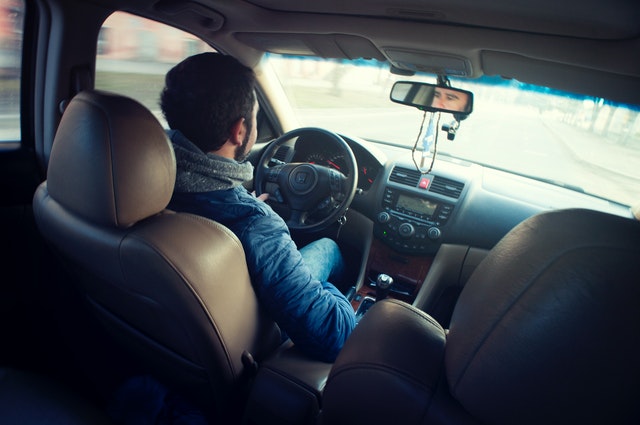For most Canadian drivers, purchasing a vehicle is a big step. Whether you buy new or used, you become the owner of the vehicle after the transaction is completed. But what exactly does that indicate? Is it necessary for me to register my car and pay for insurance every year? If I sell my car, how do I transfer ownership? There are so many questions!
In this blog post, we’ll look at the types of ownership, Ontario car ownership transfer to family, or when selling your vehicle. We also address some frequently asked questions to help you understand vehicle ownership better.
On this website, you can try our free Ontario G1 practice test to strengthen your driving knowledge to avoid any mistakes on the road.
What is car ownership in Ontario?
The green piece of paper issued by the province is most commonly associated with ownership in Ontario. It’s also known as a car title or a vehicle permit. When you buy a car from a dealership or transfer it through a private transaction, you will obtain this document. It contains the following details:
- The VIN number
- Make and model of the car
- Name and address of the car owner
- The license plate number
- The smaller portion of the plate sticker.
Vehicle ownership, contrary to popular belief, gives more than just proof of ownership. This document is particularly crucial when filing an insurance claim because the owner of the vehicle will be compensated in the event of damage caused by the covered risk.
Vehicle ownership permit vs vehicle registration
The process of purchasing a car is known as vehicle ownership. The permit is the green piece of paper that the seller provides you. The procedure of registering your vehicle with the province of Ontario is known as vehicle registration.
You’ll need evidence of insurance, a legal license plate, and a plate sticker to register. You can finish this process at any ServiceOntario facility.
What is needed to transfer ownership of a car in Ontario?

It’s critical to understand the laws regarding ownership transfers whether you’re buying a used car or selling your own vehicle in Ontario.
Depending on the type of transaction, the term transfer may have different meanings: transferring from one dealership to another; transferring between two private parties (e.g., when someone buys a new car and privately sells their old); or transferring between family members who want to sell an asset such as property rights for inheritance purposes.
Before we begin, you’ll need to gather the following documents:
Used Vehicle Information Package (UVIP)
The UVIP includes the following:
- Details of vehicle (make, model, year)
- Registration history
- Lien information
- Average wholesale value of the vehicle
- Retail sales tax information
- Condition of vehicle
- Bill of sale portion.
If you’re looking to buy a used car, the UVIP (Used Vehicle Information Package) is required by law to be provided during any private transaction. When purchasing from a registered dealer or transferring ownership between family members, a UVIP is not required. For $20, you can get one from ServiceOntario.
Safety Standards Certificate
The safety standards certificate certifies that a vehicle complies with minimum safety standards on the date of inspection and issuance. This certification is required by MTO requirements when transferring used vehicles to new owners, but not when transferring to spouses. This certification is valid for 36 days and can be obtained from any MTO-licensed inspection station, with prices varying by region.
How do I transfer ownership of a car in Ontario?

You’ll need to transfer ownership of a used vehicle if you’re buying or selling one. The requirements for both buyers and sellers are listed below.
Buying
These are the steps to take if you’re a buyer trying to transfer a vehicle:
- Verify that the VIN number on the permit matches the VIN number on the vehicle
- Complete the bill of sale section of the UVIP
- Complete the transfer application
- Within 6 days following the sale, bring the UVIP and vehicle permit to a Service Ontario location
- Pay the sales tax, registration, license plates, and sticker for your vehicle.
- Provide proof of car insurance.
Selling
But how to sell a car in Ontario? If you’re a seller considering transferring a vehicle, you’ll need to take the following steps:
- Get a UVIP and hand it over to the buyer
- On the bill of sale section of the UVIP, write the buyer’s name, signature, sale price, and date
- Sign the transfer portion of the application
- Keep your license plates and the plate portion of the ownership paper
- Notify the Ministry of Transportation that your vehicle has been sold.
It’s crucial to understand that until the buyer completes the car transfer process at Service Ontario, the vehicle will remain registered in your name, and any legal liability will remain with you. Make sure to follow up with buyers once they’ve completed the registration process to ensure a smooth transaction. Keep records to prove that the transaction was completed!
How do I transfer Inscar ownership as a gift to your family?
Most family members can receive ownership of a vehicle as a gift. A spouse, parents, grandparents, children, siblings, and in-laws are all included. When you transfer, you are not required to pay retail sales tax.
You must supply the following documentation to Service Ontario in order to complete a family ownership transfer:
- Proof of insurance
- Your driver’s license
- Vehicle ownership permit
- A sworn statement for a Family Gift of a Used Motor Vehicle in Ontario form
- Safety Standards Certificate (not required if transferring to a spouse)
- Emissions test
- A declaration of plate transfer completed (if you are also transferring license plates).
FAQs – Ontario car ownership transfer

Is it legal to own joint car ownership in Ontario?
In Ontario, joint ownership of an automobile title is allowed. This also means that both parties must sign all of the automobile’s paperwork. All parties must sign off on the required papers if you plan to sell or transfer.
Is it possible to own a car under two names?
Yes, you are allowed to add two names. The majority of people do so in order to qualify for vehicle loans and make driving more affordable. It’s becoming more and more common for friends, roommates, and family members to share it.
Is it possible to put a car in my parents’ name?
Yes, you can put your parents’ names on the title. Many parents buy cars for their children and register them in their names. The child’s name might also be added to the title
If I am leasing a car in Ontario, do I own it?
No. You do not own the vehicle when you sign a lease agreement. It is owned by the vehicle dealership or the parent company. The ownership and registration papers will still be handed to you.
Is it necessary to have ownership of my vehicle when driving?
Yes, it is required by law in Ontario to have your vehicle registration with you at all times while driving. Keep it in your glove box to ensure that you never leave home without it.
When do I have to present proof of ownership of a vehicle?
The following are the most common instances in which you will be required to present proof of vehicle ownership:
-
When you sell your vehicle
-
When you transfer ownership
-
When you’re pulled over by the police
-
When replacing your license plate that’s been lost, stolen, or damaged.
How much does Ontario car ownership cost?
It will cost $32 in Ontario. This is applicable to any type of automobile. This fee is frequently included in the overall purchase price and will appear on the car bill of sale.
How can I replace your lost ownership of the car in Ontario?
At Service Ontario, you can replace your car papers if they’ve been lost, damaged, or stolen. The cost of a replacement is $32, and you’ll need identity, a driver’s license, and proof of insurance to obtain new ownership.
Read more >> What Is The Fine For Driving Without Insurance In Ontario?
Can I transfer vehicle ownership to Ontario online?
No. It is not possible to adjust car ownership online. To present evidence of ownership, insurance, and other documentation, you must go to a ServiceOntario location.
How can I make a change of address for my car in Ontario?
You can update your address on your driver’s license online. You will, however, need to pick up your updated car ownership paperwork from any ServiceOntario location. You must bring your old driver’s license with you. You will be charged a $32 cost if you do not have your previous permit.
Can I transfer ownership of a car with a lien?
Yes, a vehicle with a lien or outstanding debt can be transferred. Purchasing a vehicle with a lien might be risky. If the lien is not paid, the debtor has the right to seize the vehicle from either the individual who owes the money or the car’s buyer.
How to transfer ownership of a car when someone dies in Ontario
After a death, there are several options for transferring ownership. To transfer the will to a beneficiary, the executor must go to ServiceOntario and present a copy of the will, car ownership paperwork, personal identification, evidence of insurance, and proof of death certificate.
Final Thought
Giving a car as a present is a nice and savvy choice, whether you’re looking to buy a new or used vehicle for yourself or to assist a family member in need of transport. Before you do that, be sure you understand the procedure of Ontario car ownership transfer when you sell or buy one. According to the information provided, you should be aware of the significance of a vehicle ownership document, a green piece of paper that you probably avoid having tucked in your glove box.

PCCN vs CCRN: Which Certification Should I Take?
In this discussion, we will examine the fundamental distinctions between PCCN vs CCRN certifications, allowing you to make an informed and right decision about which certification is best for your nursing career progression.
June 20, 2023

Is PCCN Worth It? A Comprehensive 2025 Study Guide
In this article, we will provide all the enrollment criteria, how to apply, whether is PCCN worth it for you to obtain, and how to get a high mark.
June 20, 2023

PCCN Requirements - How to Become a Progressive Care Certified Nurse?
To become a progressive care nurse, you must first obtain the PCCN certification. This post will help you understand PCCN certification, PCCN requirements, and efficient approaches to obtaining this certification.
June 20, 2023
